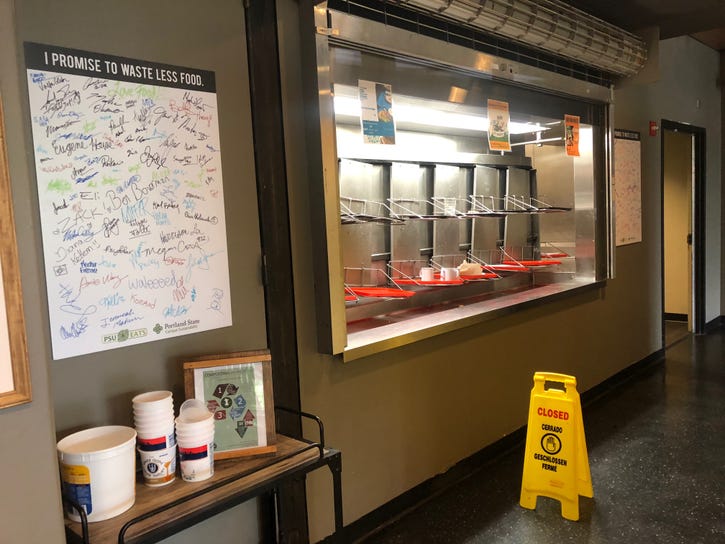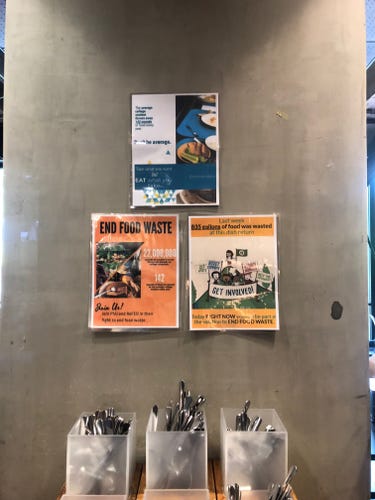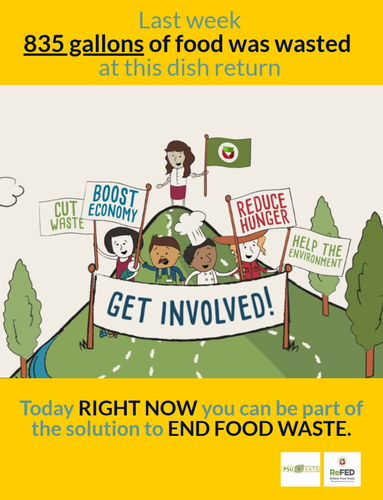ReFED Food Waste Action Guide Put to the Test
Compass Group managed an eight-week pilot at Portland State University to test the guide’s food waste recommendations.

Forty percent of food waste occurs at consumer-facing businesses, including retail, restaurants and foodservice providers in institutional and corporate settings. That’s a lot of garbage, but the problem presents an opportunity to cut food waste by 16 million tons in the foodservice and restaurant sectors alone.
That’s why nonprofit Rethink Food Waste through Economics and Data (ReFED) created a Foodservice Food Waste Action Guide intended to help these niches develop reduction strategies. The guide has been put to the test—at least in one moderate-sized pilot.
The eight-week pilot took place at a Portland State University dining center and was managed by Compass Group, USA.
“Our goal was to prove the guide’s recommendations can be put into practice in the real world, to understand how they are implemented on the ground and to understand their impact on food waste reduction,” says Jackie Suggitt, multi-stakeholder initiatives director at ReFED.
The pilot focused on two practices outlined in the guide: food donation and consumer education/engagement. It was done at a campus dining center that serves all-you-can-eat lunches to about 365 students a day.

“Portland is a sustainable city, and college students are one of the most aware parties we serve. So, when we picked this site as a pilot, we weren’t sure what we were going to do to improve in the way of reducing food waste,” says Becky Green, senior manager of sustainability for Compass Group, USA.
But the company learned that the power of education, even among a seemingly informed population, should not be taken for granted.
Among outcomes was a 10 percent increase in donation capture rate, which is about 830 pounds or the equivalent of 700 meals. And the campus saw a 20 percent reduction in plate discards.
As far as the food donation component, the campus was doing this work before the pilot. But it set out to improve, specifically by establishing a new standard operating procedure for food and food waste tracking, as tracking enables better management, greater understanding of diversion rates and helps identify opportunities for improvement.
The second focus was finding an ideal method to safely hold food for weekly donation pickups, which ended up being using a separate cart in the walk-in space and transferring donations to another location if the space filled up.
For the student education component, posting signs in the dining hall to encourage food waste reduction proved motivating. And really thinking out what to put on those signs was especially big.

“I don’t think generic signs work anywhere, but especially not in college. The message needs to be in their language and something they can relate to personally,” says Green.
And actually showing them, rather than simply telling them via signage, made a difference, too.
The dining team took waste that it routinely tossed and put it on a tarp for part of the day, so students could see how much they’d thrown out.
“They could both see and smell it. They could visualize how much was generated collectively in one day versus their one side of potatoes they didn’t finish. It made it tangible, and as they became more aware [and took only what they could eat], they could see the piles reducing from day to day. They could understand their personal impact,” says Green.
This was an eye-opener for dining staff, too, who could tweak their daily practices around production and purchasing.
“Through this pilot, we've seen the potential impact of solutions in the guide,” says Suggitt, who describes the trial as simple and easy to replicate and scale across foodservice accounts.
Further, prioritizing improved sustainability practices around organics brings opportunity for collaboration to drive food waste reduction, says Suggitt. She projects that honing the business value of reducing food waste not only will present potential opportunity for these large generators but also for technology developers, donation partners and other stakeholders.

ReFED is continuing to partner with Compass to identify and pilot solutions that align with its clients’ broader sustainability goals, says Chris Cochran, executive director for ReFED.
“We will write up case studies on lessons learned to apply across the broader industry. We have just started,” he says.
Among key findings of the Foodservice Food Waste Action Guide:
Prevention practices are the most cost effective and could reduce annual food waste by 600,000 tons.
Waste tracking and analytics can reduce pre-consumer waste by up to 50 percent.
Providing varying portion choices or options and tray-less dining can reduce postconsumer waste by as much as 30 percent.
About the Author
You May Also Like




.png?width=300&auto=webp&quality=80&disable=upscale)